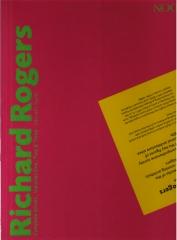The first volume, covering the period 1961-88, features all of Rogers' early work with Norman Foster and Team 4, and his partnerships with Su Rogers and Renzo Piano, and the ethos and philosophy of his present practice, the Richard Rogers Partnership. The author's interviews with key figures build up a portrait of the teamwork involved in producing the buildings of Rogers' expansive career. Each project, from Creek Vean in Cornwall (1966), through the Rogers and Piano collaboration at the Pompidou Centre in Paris (1971-7), to Lloyd's of London (1978-86), is examined in detail and presented vividly with visual material from the practice's own archives. A complete list of works from the period is included, which reveals the developing yet distinctive scope of Rogers' work in this crucial phase of his career.The second volume of the "Complete Works" of Richard Rogers examines the work of the Richard Rogers Partnership from 1987 to 1992, picking up from the highly acclaimed Volume 1. Following the completion of the Lloyd's Building came expansion for the firm, a new office in Tokyo, and a large number of competitions and schemes, much of which remains unbuilt.
Over 50 projects are featured in the book, including competition schemes for Terminal 5 at Heathrow Airport and the Tokyo International Forum, and buildings such as Channel 4 headquarters, the Strasbourg Court of Human Rights, 88 Wood Street and the Bordeaux Law Courts. In a series of insightful essays, Kenneth Powell analyses 'Continuity and Expansion' within the Rogers office, discusses different topical subjects essential to the architecture - such as 'Low-Energy Buildings', 'Masterplanning and the City' - and concludes with a rigorous review of Rogers' work in more recent years.The third volume of the "Complete Works" looks at the most recent projects by the Richard Rogers Partnership - the period from 1994 to 2005 - and discusses in detail many of the innovative and often high-tech schemes for which the practice has become renowned.
Including over 48 projects, this book features the realized and unrealized projects over this period, such as Greenwich Peninsula and the Millennium Dome, London, a school near Kyoto, the transformation of a Barcelona bullring into a major entertainment complex, masterplans for Wembley, London, and Florence, Madrid Airport and London Heathrow's Terminal 5, as well as a new library for Birmingham and London's first Maggie's Centre.The book is prefaced with a general introduction to the office, which brings the story of the practice up to date. The second key essay examines the impact of Richard Rogers in the political arena, particularly his chairmanship of the Urban Task Force and his work as adviser on architecture and urbanism to the mayors of London and Barcelona. The final essay discusses the continuing growth of the practice both at home and abroad and the impact of a new generation of talent rising to the fore. This item has been added to your basket.
Continue

(0 Comentarios)